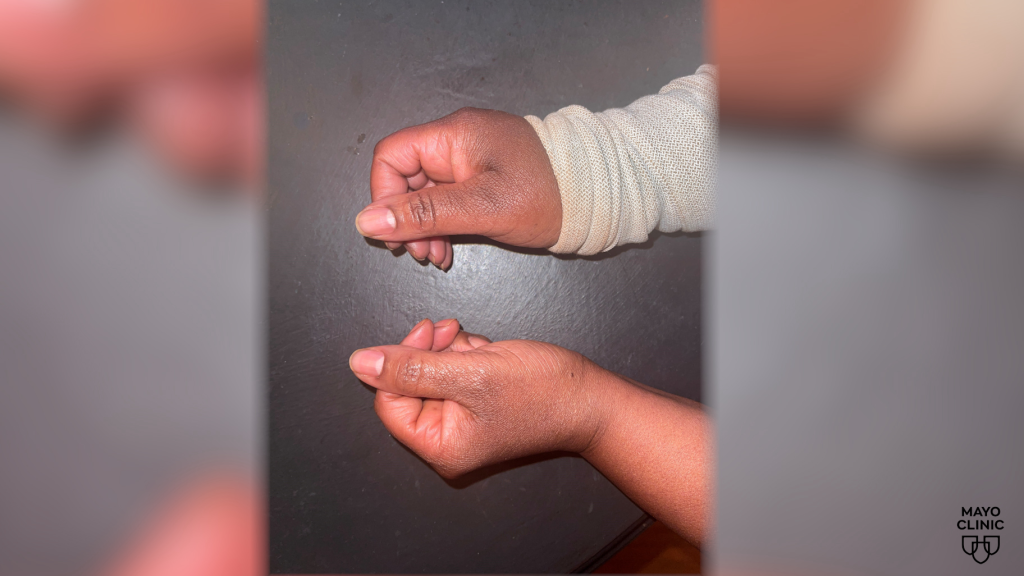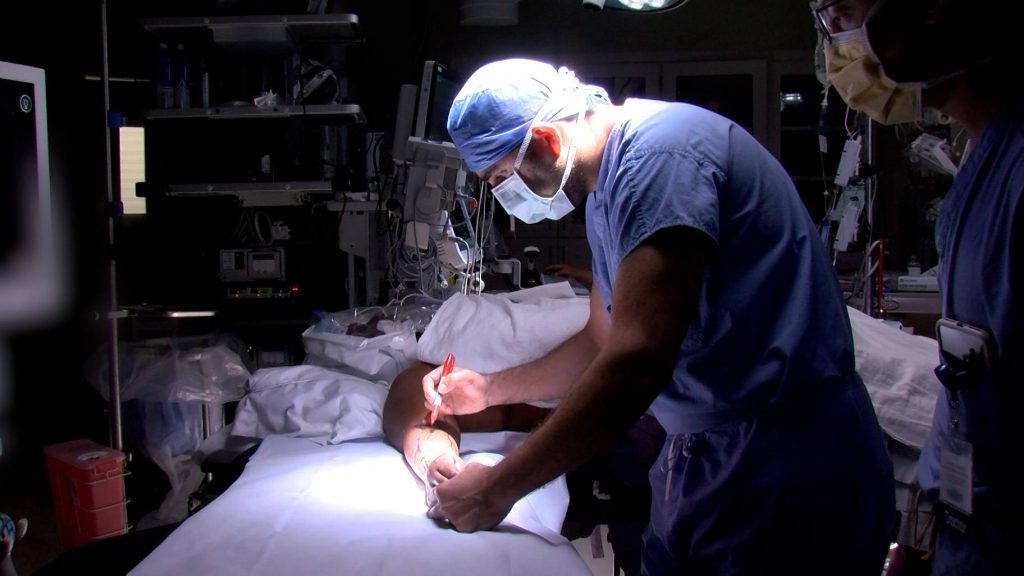The journey of a cancer survivor often extends far beyond the triumphant ringing of a brass bell, signaling the end of treatment. Sonya Goins received treatment at Mayo Clinic for HER-2-positive breast cancer in 2020. Since sharing her story of survival with the Mayo Clinic News Network, a lot has changed in Sonya’s life. She became a Mayo Clinic employee, working in the Communications Department. She also continues to confront post-cancer health challenges, including being diagnosed with lymphedema.
Watch: Lymphedema: A little-known breast cancer side effect with lifelong impacts
Journalists: Broadcast-quality video (2:39) is in the downloads at the end of this post. Please courtesy: “Mayo Clinic News Network.” Read the script.
“I thought once I rang that bell, it was over. But it wasn’t over,” says Sonya.
A few months after completing targeted radiation treatment for breast cancer, Sonya noticed swelling in her lower arm.
“I wasn’t sure what it was. And they told me, ‘Hey, you need to come into the emergency room. It might be an infection.’ And (I) went to the emergency room, and they’re like, ‘No, it’s lymphedema,'” says Sonya.
Lymphedema is a chronic and debilitating disease in which tissue swelling is caused by an accumulation of fluid that’s usually drained through the lymphatic system.
About 40% of people who undergo breast cancer surgery where their lymph nodes are removed will develop lymphedema.
“It was painful. It was hard to sleep because it just felt like my arm was thumping all the time. I noticed, particularly at the end of the day, like, I typed a lot for my job. And I noticed my arm at the end of the day would swell up,” says Sonya.

“To be honest with you, it was a little disheartening because I thought, ‘Hey, this is over because, you know, you got the cancer. The cancer is gone, but now you have to live with the aftereffects.'”
But she didn’t have to live with it. Sonya did some research and reached out to her Mayo Clinic care team. She found out about a surgery to help patients with lymphedema.

“When I met Sonya, she already had stage 2 disease,” says Dr. Vahe Fahradyan, a Mayo Clinic plastic surgeon who specializes in breast reconstruction and lymphatic reconstruction. “In her particular case, because she had some remaining functional lymphatic vessels, we decided that we’re going be able to do lymphovenous bypass surgery.”
Using special dye to identify the lymphatic pathways, surgeons use small incisions to reroute the lymphatic system by connecting tiny lymphatic vessels to tiny veins, creating a detour around the damaged part of the lymphatic system. This new connection restores the body’s ability to drain lymphatic fluids.
While lymphedema is considered an incurable disease, getting outcomes like Sonya’s, where patients can easily manage the symptoms and improve their quality of life, is the ultimate goal.
“My symptoms are so minimal, says Sonya. “I’ve gotten back to working out, and I’m able to swing kettlebells, which I couldn’t do before. And my arm does not swell up at the end of the day. So that’s amazing to be able to sleep and sleep better, and there’s no more pain.”
Dr. Fahradyan says one major key to achieving that is early diagnosis.
“The message is that if you notice that you have arm swelling or breast swelling or the lower extremities, it is not normal. You don’t have to live like this,” he says.
